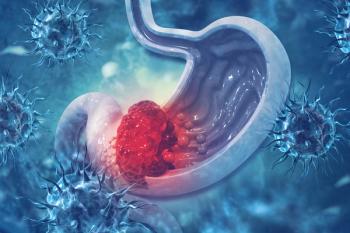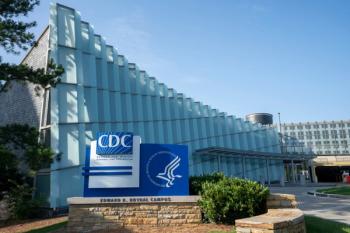
COVID-19 Boosters Crucial for Patients With Cancer Despite Low Uptake
Key Takeaways
- COVID-19 boosters significantly reduce hospitalization and ICU admissions in patients with cancer, but uptake remains low, necessitating targeted interventions to improve vaccination rates.
- Monovalent boosters show higher effectiveness in preventing COVID-19 hospitalization and ICU admissions compared with diagnosed cases, with varying effectiveness across cancer subtypes.
Despite offering significant protection against severe COVID-19, patients with cancer, a high-risk group, showed low uptake of booster vaccinations.
The
Vaccinations for SARS-CoV-2 are found to be effective at preventing hospitalization, with boosters and extra primary doses further increasing protection.2 The CDC's Emergency Use Authorizations and recommendations advised an extra primary dose for immunocompromised individuals and a booster for those 18 and older. These booster approvals aimed to enhance immunity in immunocompromised people, combat waning vaccine effectiveness, and address the highly transmissible Delta variant.
Researchers conducted a retrospective cohort study, using data from Cedars-Sinai Health System, Kaiser Permanente Northern California, Northwell Health, and the Veterans Health Administration.1 They identified COVID-19 hospitalization and positive SARS-CoV-2 test results (14 days before to 7 days after admission) as the primary outcome. The secondary outcome focused on COVID-19 and COVID-19 hospitalization requiring intensive care unit (ICU) admission during any point of hospitalization.
Out of 72,831 patients with cancer (24.6% female), 69% received a monovalent booster before January 1, 2022, compared with 49% of nonimmunocompromised individuals. Over 34,006 person-years of follow-up, COVID-19 hospitalization rates were 30.5 per 1000 person-years for boosted patients vs 41.9 per 1000 person-years for those who only completed the primary series. This translated to an adjusted vaccine effectiveness of 29.2% (95% CI, 19.9%-37.3%), meaning 166 people needed vaccination to prevent 1 COVID-19 hospitalization (95% CI, 130-244).
The vaccine's effectiveness and number needed to vaccinate (NNV) remained similar across cancer subgroups. For those with solid malignant neoplasms, vaccine effectiveness was 24.3% (95% CI, 13.2%-33.9%) with an NNV of 215 (95% CI, 154-395). For hematologic malignant neoplasms, effectiveness was 29.8% (95% CI, 15.0%-42.1%) with an NNV of 115 (95% CI, 81-230). Importantly, patients undergoing cytotoxic chemotherapy or immunotherapy and those receiving systemic corticosteroids for cancer treatment saw significantly reduced rates of COVID-19 hospitalization with monovalent vaccination.
For patients with cancer, a monovalent booster reduced the diagnosed COVID-19 rate to 216.3 per 1000 person-years, compared with 241.8 for those with only the primary series. This showed an 8.5% vaccine effectiveness and meant 110 vaccinations were needed to prevent 1 diagnosed COVID-19 case.
A monovalent booster had a 5.3% vaccine effectiveness in preventing diagnosed COVID-19 among nonimmunocompromised individuals, requiring 302 vaccinations to prevent 1 case. For patients with cancer, the monovalent booster lowered COVID-19–related intensive care unit (ICU) admission rates to 9.2 per 1000 person-years, vs 13.3 for those with only the primary series. This indicated a 35.6% vaccine effectiveness, with 423 vaccinations needed to prevent 1 ICU admission.
For solid malignant neoplasms, the NNV to prevent 1 COVID-19–related ICU admission was 578 (95% CI, 372-1939), while for hematologic malignant neoplasms, it was 252 (95% CI, 176-616).
During the bivalent period, out of 88,417 patients with cancer (27.8% female) with 81,027 person-years of follow-up, those who received the bivalent booster (38% uptake) had a lower COVID-19 hospitalization rate (13.4 per 1000 person-years) compared with those who did not (21.7 per 1000 person-years). Bivalent vaccine uptake was also higher among patients with cancer (38%) than in nonimmunocompromised individuals (24%).
For patients with cancer, the bivalent vaccine significantly lowered the COVID-19 hospitalization rate to 13.4 per 1000 person-years, compared with 21.7 per 1000 person-years for those who weren't vaccinated. This translates to a vaccine effectiveness of 29.9% and an NNV of 451 to prevent 1 COVID-19 hospitalization. The vaccine's effectiveness in preventing hospitalization was particularly notable for patients with lung, breast, and urinary tract cancers, as well as those receiving cytotoxic chemotherapy, immunotherapy, or systemic corticosteroids.
For patients with cancer, the bivalent vaccine didn't significantly prevent diagnosed COVID-19. The infection rate was 112 per 1000 person-years for vaccinated patients vs 116.8 for unvaccinated, with an adjusted vaccine effectiveness of only 2.9% (95% CI, –2.6% to 8.2%). The vaccine also showed no effectiveness against diagnosed COVID-19 in those with solid or hematologic cancers, or in nonimmunocompromised individuals.
However, the bivalent vaccine did reduce COVID-19–related ICU admissions among patients with cancer. Those who received the vaccine had an ICU admission rate of 3.3 per 1000 person-years, compared with 5.4 for those who didn't. This translates to a vaccine effectiveness of 30.1% (95% CI, 7.7%-47.0%), meaning 1805 people (95% CI, 1154-7009) would need vaccination to prevent a single ICU admission.
The study's limitations include its observational, retrospective design, which carries risks of confounding and misclassification from incomplete vaccination records. Site heterogeneity across the 4 included health systems also limits the generalizability of the findings to the broader US population. Additionally, some cancer subtypes had small sample sizes, researchers did not assess vaccination timing relative to treatment, and at-home COVID-19 test results likely led to underreported diagnoses.
“Uptake of COVID-19 vaccine boosters was relatively low and interventions are therefore justified to increase COVID-19 vaccine uptake in this high-risk population,” study authors concluded.
References
1. Skarbinski J, Elkin EP, Ziemba YC, et al. COVID-19 vaccine booster uptake and effectiveness among US adults with cancer. JAMA Oncol. Published online July 17, 2025. doi:10.1001/jamaoncol.2025.2020
2. Fast HE. Booster and additional primary dose COVID-19 vaccinations among adults aged ≥65 years — United States, August 13, 2021–November 19, 2021. MMWR Morb Mortal Wkly Rep. 2021;70(50):1735-1739. doi:10.15585/mmwr.mm7050e2
Newsletter
Stay ahead of policy, cost, and value—subscribe to AJMC for expert insights at the intersection of clinical care and health economics.





























































